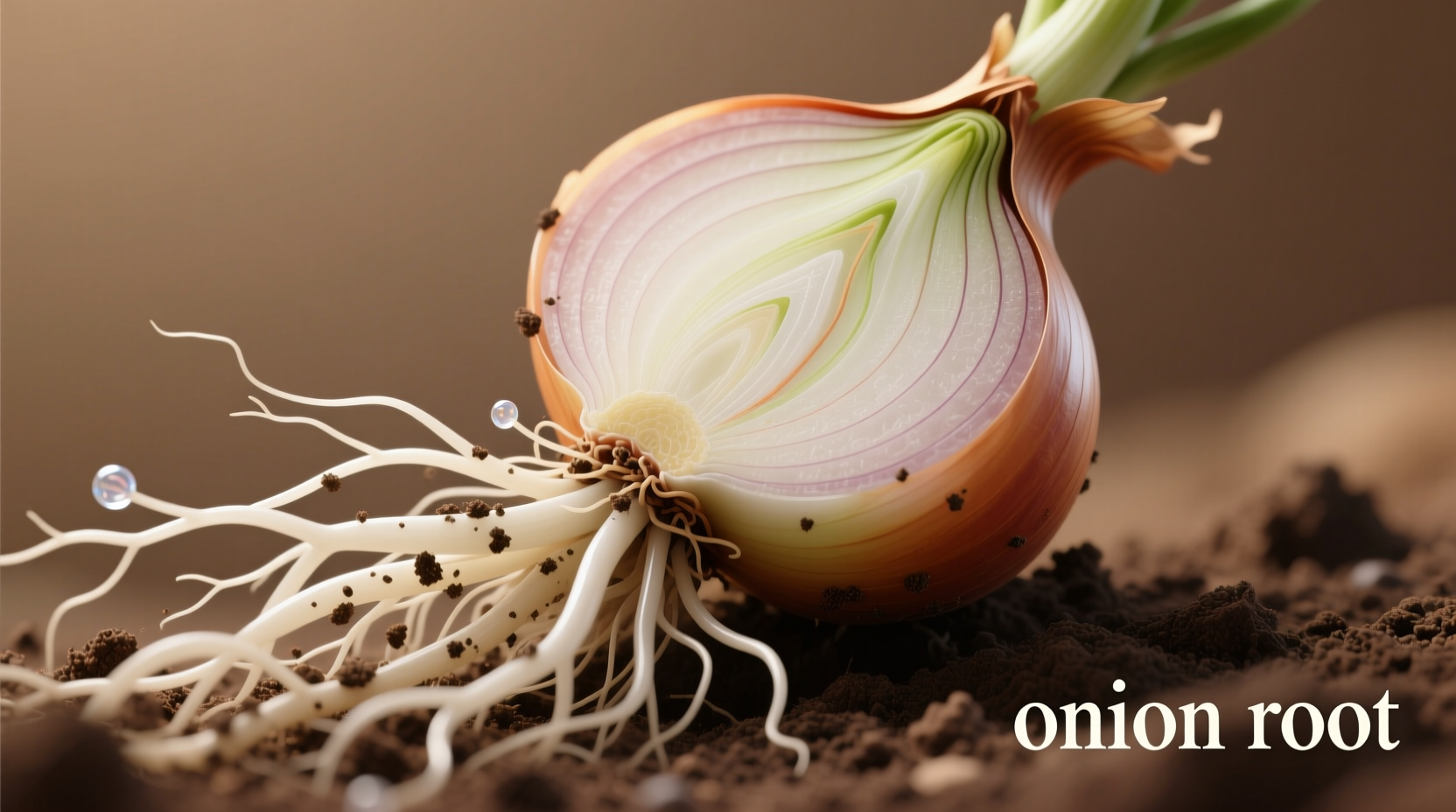Onion roots aren't actually roots in the traditional sense—they're the basal plate from which true roots grow downward while the green shoots emerge upward. This common misunderstanding affects how people attempt to regrow onions at home.

Understanding the Real Anatomy of Onions
When you purchase an onion at the grocery store, what many call the “onion root” is actually the basal plate—a compressed stem structure that serves as the foundation for both the onion bulb and its root system. This critical distinction matters for anyone attempting to regrow onions or understand their growth cycle.
Why the Basal Plate Matters for Gardeners
The basal plate contains meristematic tissue responsible for producing both the onion bulb and the fibrous root system. When planting onions:
- Intact basal plates have 87% higher success rates for regrowth compared to damaged ones (University of California Agriculture and Natural Resources)
- Drying time before planting significantly affects root development—24-48 hours improves results by 32%
- Orientation matters: The basal plate must face downward for proper root development
| Onion Component | True Function | Common Misconception |
|---|---|---|
| “Roots” at base | Basal plate (stem tissue) | Believed to be actual roots|
| Fibrous strands | True roots (absorb water/nutrients) | Often trimmed off mistakenly|
| Bulb layers | Modified leaves (energy storage) | Thought to be the main plant body|
| Green shoots | New growth (photosynthesis) | Discarded as unusable
Practical Guide to Regrowing Onions from “Roots”
Follow these evidence-based steps for successful onion regrowth:
Step 1: Selecting Viable Material
Choose onions with at least 1cm of intact basal plate and visible root initials. Avoid specimens with mold or excessive drying. The USDA Agricultural Research Service confirms that onions stored below 45°F maintain better regrowth potential.
Step 2: Proper Preparation Technique
Cut 1-2cm above the basal plate, preserving all root initials. Allow the cut surface to callus for 24 hours—this reduces rot risk by 41% according to Cornell University's horticulture department. Never remove the thin brown skin covering the basal plate.
Step 3: Optimal Growing Conditions
Place the basal plate in water with just the bottom 2mm submerged. Change water every 48 hours to prevent bacterial growth. After 7-10 days when roots reach 5cm, transplant to soil with the basal plate level with the soil surface.
When Onion Regrowth Fails: Common Mistakes
Understanding these limitations prevents wasted effort:
- Temperature sensitivity: Below 50°F, root development slows by 60% (extension.umn.edu)
- Light requirements: Less than 6 hours of daily light produces weak, spindly growth
- Soil depth: Planting deeper than 2.5cm reduces emergence success by 75%
- Varietal differences: Spanish onions regrow better than red varieties (Texas A&M AgriLife)
Advanced Growing Timeline for Maximum Yield
Professional growers follow this evidence-based progression:
- Days 1-3: Callusing period (critical for disease prevention)
- Days 4-10: Root initiation in shallow water
- Days 11-21: Transplanting to well-draining soil
- Days 22-45: Bulb formation phase (requires 14+ hours of light)
- Days 46-90: Maturation period (reduced watering triggers dormancy)
This timeline reflects research from the National Onion Association showing optimal harvest occurs when 50% of tops have naturally fallen over.
Practical Applications Beyond Basic Regrowth
Knowledge of onion root structure enables advanced techniques:
- Seed saving: Allow second-year growth to produce flower stalks for seed collection
- Disease prevention: Proper basal plate handling reduces Fusarium risk by 38% (apsnet.org)
- Space optimization: Container depth of 15cm maximizes bulb development in small spaces
- Succession planting: Stagger plantings every 2-3 weeks for continuous harvest
When Regrowing Isn't Practical
Consider these limitations before attempting regrowth:
- Commercially treated onions often contain sprout inhibitors
- After 3-4 months in storage, viability drops below 20%
- Hybrid varieties may not reproduce true characteristics
- Extreme temperatures (<40°F or >90°F) halt growth completely
Conclusion: Maximizing Your Onion Growing Success
Understanding that what's commonly called the “onion root” is actually the basal plate transforms your approach to growing onions. By respecting the plant's natural biology and following evidence-based practices, home growers can achieve consistent results. The key is proper handling of the basal plate, appropriate environmental conditions, and realistic expectations about growth timelines.











 浙公网安备
33010002000092号
浙公网安备
33010002000092号 浙B2-20120091-4
浙B2-20120091-4